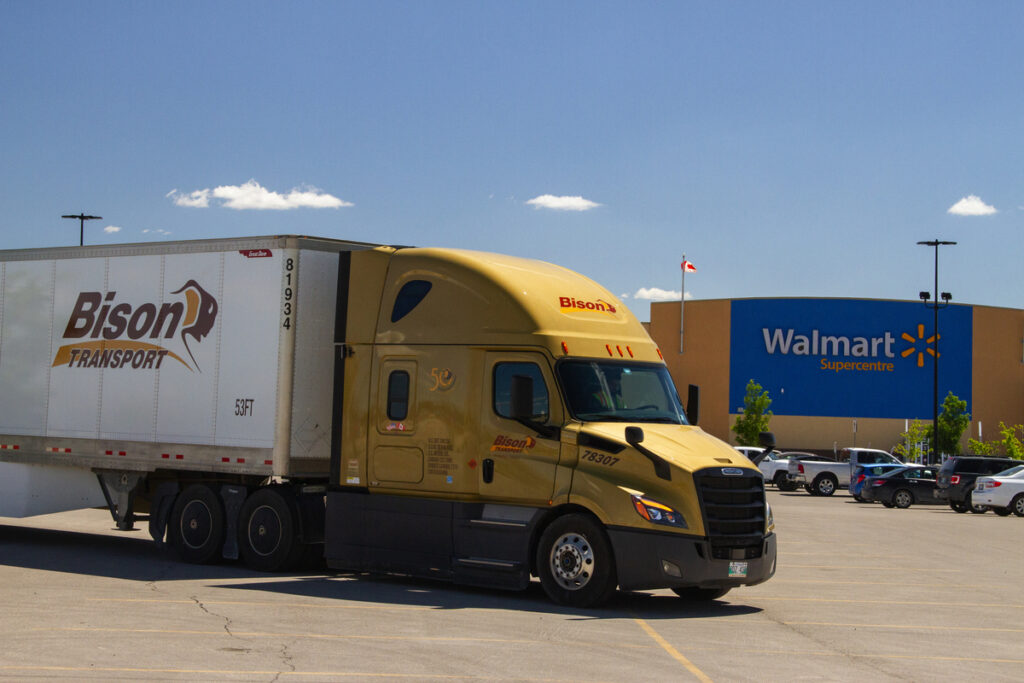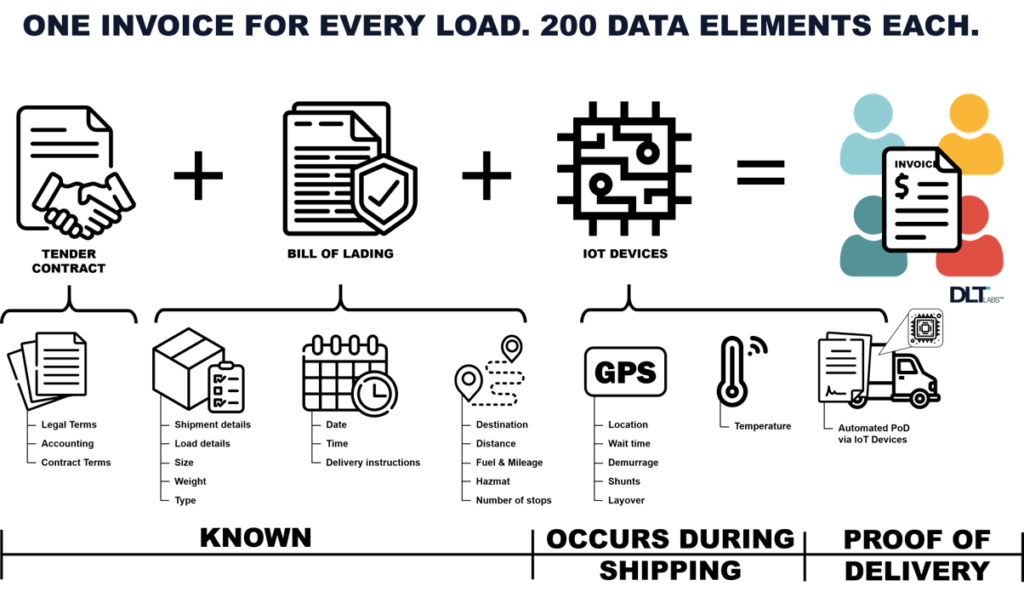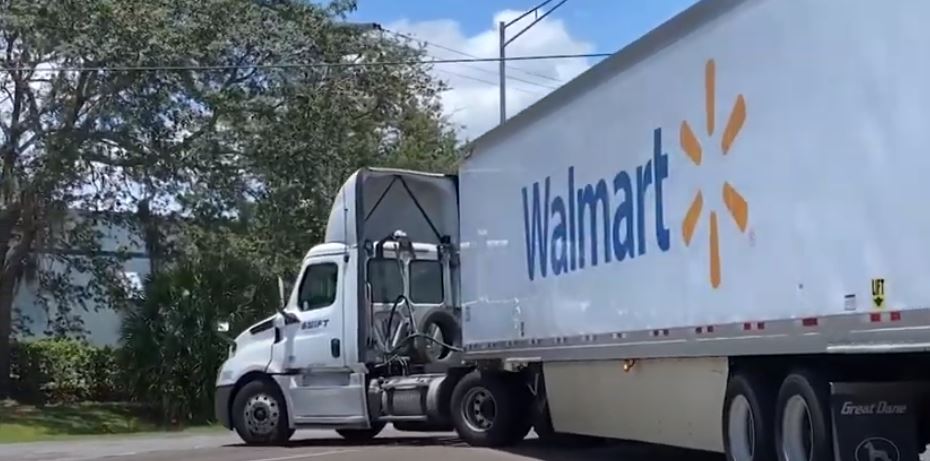Walmart Canada leverages blockchain to solve a billing nightmare
Walmart Canada and Bison Transport have enjoyed a long-lasting business relationship, but it had become a billing nightmare. Invoices linked to the discount retailer’s freight were disputed more often than not. Challenges were so commonplace that weekly meetings were needed to review the documents line by line.
“We had a pretty severe problem,” says Rod Hendrickson, Bison Transport’s vice-president – finance. Millions of dollars in invoices were overdue. “And we need our cash flow like everybody else.”

The challenges weren’t unique to Bison, either. Walmart Canada relies on about 60 carriers to move close to 500,000 loads per year, and during peak periods it was disputing almost 70% of the related invoices.
“There’s a lot of things that happen in a day,” says Francis Lalonde, Walmart Canada’s vice-president – transportation. Everything from demurrage fees to accessorial charges must be accounted for, drawing on close to 200 variables and sometimes conflicting pieces of information.
“It was really a ton of highly, highly manual, completely non-value-added work,” he says.

An industrial-grade blockchain
A dramatic solution that emerged over the last year and a half came in the form of a partnership with Toronto-based DLT Labs, creating what’s described as the world’s largest industrial-grade blockchain.
The system known as DL Freight is essentially a common electronic ledger that hosts every document or piece of data associated with a shipment. Underlying blocks of timestamped information can’t be changed, leading to something recognized as a “single source of truth”.
This makes it possible to calculate shipping charges in real time, complete with the automated checks and balances that leverage data generated through the Internet of Things. Demurrage fees, for example, can be triggered using the GPS data from a truck that passes through a geofence. Final invoices are automatically fed into the enterprise resources planning (ERP) system and paid.
No more addressing challenges by poring over email exchanges.
Disputes with third-party carriers have plunged 97% in a matter of months, and the Council for Supply Chain Management Professionals has named Walmart Canada and DLT Labs one of six finalists for its Supply Chain Innovation Award.
During one recent check, Hendrickson identified a single disputed transaction in a day. Before the system was introduced, the fleet was dealing with hundreds or even thousands of disputed items at a time.
A dramatic change
Bison’s balance sheet improved by a factor of millions of dollars in the process. The change was so dramatic that one auditor asked Hendrickson if the volume of Walmart freight had suddenly dropped for some reason. It hadn’t.
Fleet personnel had heard about Blockchain before, but this was the first time it was put to use. And the process was admittedly smoother than expected. The interface still had to be “Bison-ized” to align with internal business processes, but once that was established everything was uploaded and working within a month, Hendrickson says.
The rollouts with other fleets began in October and were completed last week.
“We onboarded carriers in a matter of 72 hours for a straightforward user,” says Pete Gowanlock, vice-president – freight at DLT Labs. Its DL Freight could support transactions anchored in everything from modern transportation management systems to legacy mainframes.
“The hardest thing was convincing people it wasn’t that hard,” says Loudon Owen, CEO of DLT Labs. Perhaps the biggest challenge was simply ensuring the system already met Walmart’s exacting security requirements.

Even the ‘whale surcharge’
Even the most unusual transportation challenges can now be addressed. Lalonde likes to refer to the example of a “whale surcharge” that applies when container vessels have to slow down off the coast of Newfoundland to protect the mammals. Those situations are now all accounted for by adding a single piece of information to the blockchain.
It all contributes to a stronger working relationship between shipper and carrier alike.
“We don’t want to have a partnership where we’re struggling to pay our partners and they’re struggling with their receivables,” Lalonde says, noting that invoices are now processed in a matter of days. “It became very, very obvious, very quickly, that this was a win-win.”
Walmart Canada’s return on investment is measured in millions of dollars, Owen says.
“At the same time, the carriers are also experiencing material savings in time and money, coupled with faster payments.”
Beyond pilot projects
He continues to be surprised that blockchain solutions haven’t been more widely adopted, given the leap in value that can be realized.
Many of the trucking-related initiatives have at this point been limited to pilot projects, and proving concepts. dexFreight made headlines as recently as October 2018 when it used blockchain to govern a shipment of frozen food between Medley and Sunrise, Florida.
Walmart itself was an earlier partner in the Blockchain Food Safety Alliance that sees the technology as a tool for ensuring that perishable goods are properly handled on their journeys. And the Blockchain in Transport Alliance (BiTA) reports 500 members that are exploring potential industry standards.
Owen questions whether broader standards are even needed.
“Companies are built for the whole purpose of working together, but systems are not,” he says. “We work with the existing data. We don’t have to redefine it. We don’t have to have the unified standards.”
The lack of disputed invoices are just the beginning. Through blockchain, it would even be possible to offer instant payments the moment a load arrives, as long as the related conditions are outlined in a contract.
“We see all the shipment information together in one ledger that originally was a payment platform, but we are using it much more as an information platform to give us insight on how we run our business,” says John Bayliss, Walmart Canada’s senior vice-president – logistics and supply chain.
“It’s so radical, it’s so transformative. No more reconciliations. No more issues about whether it was delivered or not,” Owen adds.
Says Lalonde: “Now the focus is really around what else we can do.”
Have your say
This is a moderated forum. Comments will no longer be published unless they are accompanied by a first and last name and a verifiable email address. (Today's Trucking will not publish or share the email address.) Profane language and content deemed to be libelous, racist, or threatening in nature will not be published under any circumstances.